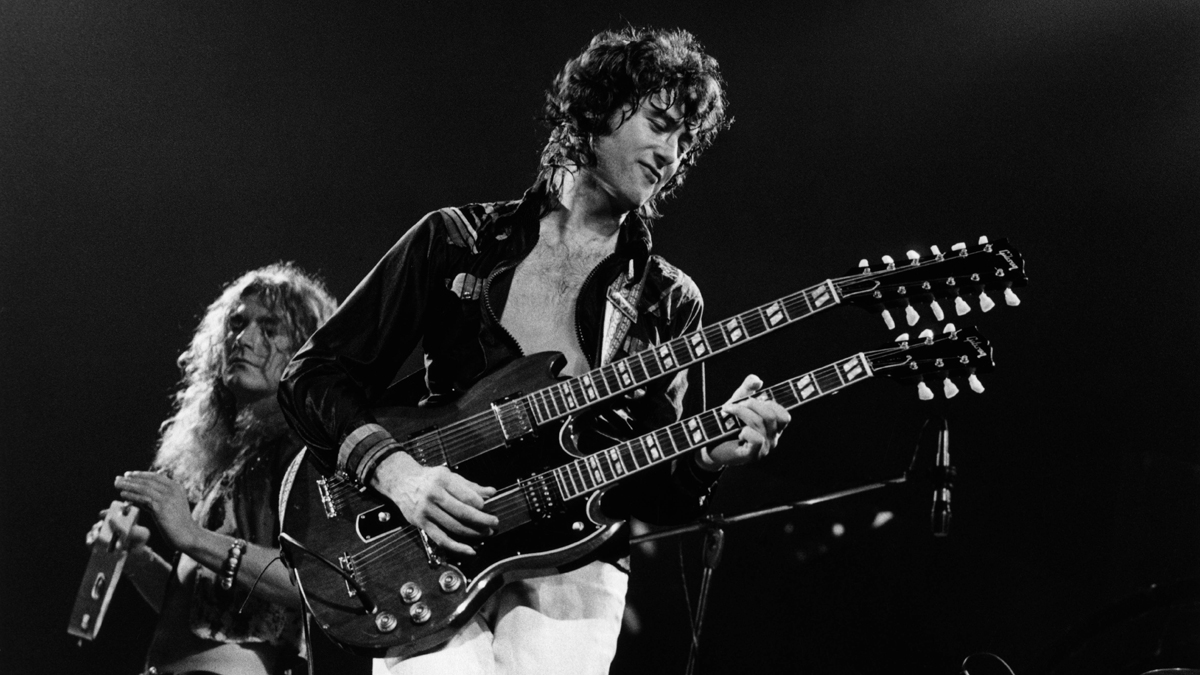The one Led Zeppelin song Jimmy Page recorded with a Gibson Flying V
Though the guitar god used his Fender Telecaster for almost the entirety of the band’s self-titled debut, he borrowed a Flying V for just one track

Jimmy Page is commonly associated with an elite handful of very select electric guitars. These models include the Fender Telecaster, the Gibson EDS-1275 and, perhaps above all others, the Gibson Les Paul Standard – a guitar with which Page performed some of his most iconic feats of guitar playing ingenuity.
Page’s affection for the three is almost legendary, and though he was often spotted playing variations of the like – such as his once-stolen 1960 Gibson Black Beauty – it was his number one ‘59 Gibson Les Paul, sold to him by Joe Walsh, and his ‘59 Telecaster, given to him by Jeff Beck, that remain his most iconic six-string side-pieces.
Indeed, his ‘59 Telecaster – at first covered in mirrors during a session stint with The Yardbirds, then treated to the iconic dragon artwork – was the driving force behind Led Zeppelin’s legendary 1969 debut album. In fact, it was responsible for every guitar part that can be heard throughout the record. Well, almost every guitar part.
Unknown to many, Page packed away his tried-and-trusted Tele for one song on Led Zeppelin in favor of a guitar that one prospective punter was trying to sell him: a Gibson Flying V.
Speaking to Guitar World back in 2014, Page settled a long-raging gear debate surrounding the album by confirming he used his Telecaster for practically the whole record, before revealing he borrowed the Flying V when the band came to record their take of Willie Dixon, Earl Hooker and Muddy Waters’ You Shook Me.
“It’s hard for people to believe, but I just used my Fender Telecaster for the entire album, except for one track,” Page revealed. “Somebody was trying to sell me a Gibson Flying V at the time. I don’t [know] what made them think I could afford it, because I clearly couldn’t, but I asked them if I could just try it out.
“I brought it into Olympic [Studio, where Led Zeppelin was recorded] and used it on You Shook Me,” he went on. “With those big humbuckers, it was so powerful you can hear it breaking up the amp in the middle of the song.
Get The Pick Newsletter
All the latest guitar news, interviews, lessons, reviews, deals and more, direct to your inbox!
“I could’ve tidied it up, but I really liked hearing the amp really struggle to get the sound out. It’s really fighting through the electronics to get out of that speaker.”
No doubt, that power and fight can be heard in the recording of You Shook Me. Page opted to play the song live using a Fender Telecaster and Gibson Les Paul in ensuing years – as seen in footage from ‘69 – but the Flying V’s studio contribution can be clearly felt on the record.
Kicking off with some swampy humbucker slides, the third track on the record rings in with a 6:29 runtime, with guitar highlights ranging from the razor sharp vocal-accompanying lead licks to Page’s no-holds-barred solo effort at the four-minute mark, which, true to Page’s word, push the amp right to the edge.
As for the fate of the Flying V itself, though, it clearly failed to make a big enough impact on Page to warrant becoming one of his main axes, and though he didn't end up purchasing the guitar, Page hinted that it may well have found solace in the arms of one of his guitar-playing peers.
“I’m not sure what happened to the guitar,” he reflected. “It might’ve found its way to Keith Richards or something, but I really don’t know.”
Richards’ own connection to the Flying V design is far more substantial than Page’s, meaning it’s almost impossible to decipher whether or not the guitar used to record You Shook Me ended up in the Rolling Stone’s possession. To make things even murkier, there are no photographs from the Led Zeppelin sessions that show Page playing a Flying V.
Since the ‘60s was a particularly formative era for the Flying V after its disappointing sales debut in ‘58 – consequently ushering in new parts, hardware and aesthetics – the quest to locate Page’s You Shook Me model looks to be a lost cause.
As for Page himself, his six-string allegiances lay elsewhere and it’s fair to say he probably never looked back. His mirror-equipped ‘59 Telecaster was recently reissued by Fender in two variants, while a recreation of his wild Dragon single-cut – a later incarnation of that same model – has also been around for a while.
Likewise, his Les Paul Standard – acquired in ‘69, which replaced his Tele – was brought back to life by Custom Shop titan Tom Murphy, who meticulously replicated the ‘burst to Page’s exacting specs in a limited run.
As such, Jimmy Page‘s name will never be as strongly associated with the Flying V, but it nonetheless played an important and oft-overlooked role for the guitarist during a pivotal point in Led Zeppelin‘s early career.

Matt is the GuitarWorld.com News Editor. He has a Masters in the guitar, a degree in history, and has spent the last 16 years playing everything from blues and jazz to indie and pop. When he’s not combining his passion for writing and music during his day job, Matt records for a number of UK-based bands and songwriters as a session musician.










